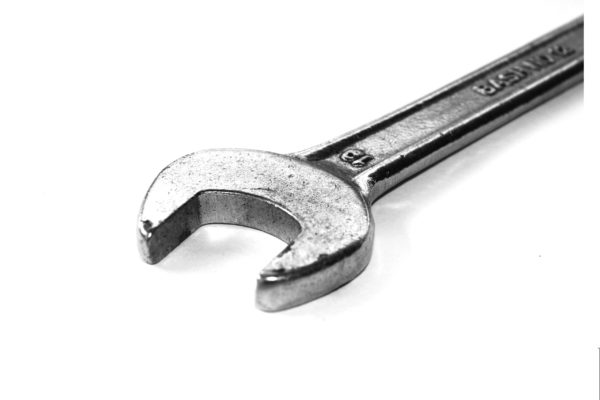This is the second in a series of articles on predictive maintenance. In the introductory article (Available here), we discussed the 4 maintenance models:
- Reactive maintenance waits for parts to break before repairing them, often making matters worse and resulting in extended downtime.
- Preventive maintenance replaces parts before they break – even if they’re healthy – creating excessive service costs.
- Predictive maintenance uses specialised tools and techniques to forecast when components will fail and the optimal time to service them, resulting in high availability and lower maintenance costs.
- Prescriptive maintenance leverages analytical computing technologies to not only predict failure but also orchestrate maintenance priorities and strategy.
In today’s highly competitive production environments, reactive and preventive maintenance have become unsustainable. Companies who cling to these traditional models stand to lose not just income but also market share.
The cost of maintenance
Traditional maintenance makes little sense, especially when the assets in question are pivotal to production continuity. These are often large, expensive machines that account for the majority of the total investment in the manufacturing or production facility. Taking them offline for maintenance is risky in terms of both component replacement costs and the financial impact on the income statement.
Servicing and repairs can easily represent 15% to 60% of the total cost of goods produced, depending on the industry or sector. For example, in the US, the average cost of maintenance in food-related industries is approximately 15% of the total cost of goods produced. However, in mining and manufacturing, the figure is nearer to 60%. In South Africa, mining is the country’s largest sector, contributing around 9% of the national GDP with maintenance consuming 20% to 50% of total operational expenditure.
Poor maintenance management
With such high costs, it’s troubling that traditional maintenance management is still so widespread. Recent surveys indicate that up to 33% of maintenance spend is due to ineffective or poorly managed maintenance programmes.
With US companies spending over $200 billion annually on maintaining plant machinery, equipment and facilities, the resulting loss is more than $60 billion per year. This is without factoring in a company’s loss of competitiveness and its inability to deliver quality products that compete in the world market.
The value of maintenance
Worldwide, operational and senior management agree that an effective maintenance programme contributes significantly to an organisation’s long-term profitability. It’s also become a priority when considering a company’s performance strategy.
Maintenance is no longer seen as just another cost centre, but rather an inseparable part of the production function that adds value through longer-term reliability and availability. Timely maintenance and repair to keep machines and equipment performing within their design capacity and specification is now an unquestionable boon to business.
Improving maintenance management
Planned maintenance as a business enabler is the new norm. But in many companies, maintenance management still lives in the dark ages of production, employing outdated thinking and strategies.
How can organisations attack and reduce these enormous cost inefficiencies? What additional or improved solutions can be implement? How can operators, artisans or supervisors be motivated to act quickly to make small but substantial differences in operations?
Entrepreneurial thinking within an establish business environment are required. Extensive research into the latest models available and where they’ve already been successfully implemented will be a revelation. Where necessary, engage maintenance management experts who can guide you along the path to radical transformation. Such an investment is a fraction of the cost savings and clearly offset by production gains and lower maintenance costs.
The case for predictive maintenance
Predictive maintenance (and its emerging cousin, prescriptive maintenance) offer the potential for a lean maintenance strategy and extended asset availability. Inevitably, the payoffs are improved production continuity, competitiveness and profitability.
Predictive maintenance utilises a range of well-defined methodologies and proven tools to test the condition of machines and equipment while they are running or at least without having to open the asset up. These include vibration monitoring, thermography, lubricant testing, and more. The procedures are typically non-intrusive and do not disrupt production.
With the data gathered, predictions can be made as to which components are heading for failure and when these failures will occur. This allows a company to plan maintenance only around those items that are at risk, rather than blindly servicing all assets.
Technological advantages
Modern predictive maintenance programmes are backed by specialised management software that provides maintenance scheduling, asset analysis, and more. In many cases, machine learning (AI) is employed to build asset risk profiles and predict failure against these performance patterns.
Prescriptive maintenance takes predictive maintenance a step further. It uses IoT (Internet of Things), machine learning (AI), cloud computing, Big Data and other technologies to suggest optimal maintenance strategies and asset maintenance priorities.
Such systems can be prohibitively expensive but, thanks to the power of the Internet and advances in IoT, their computing power can be provided to companies as a pay-per-use or subscription service. This offers any organisation the benefits of predictive or prescriptive maintenance without the cost of owning new IT systems or hiring in technical experts to maintain them.
In future articles, we’ll take a deeper look at how businesses can leverage the power of online predictive maintenance, take steps towards digitising their maintenance management, and decide on an optimal strategy for implementation.



